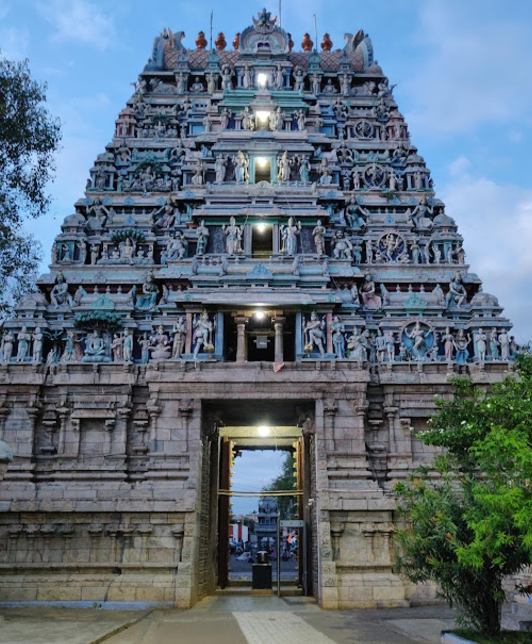Kubera, the ruler of the northern direction, wished to visit holy places in the world. He journeyed to many places and finally arrived at this sacred spot. There, he observed yogis, sages, and Gandharvas performing penance. He was astounded to witness that deer, cows, tigers, elephants, lions, dragons, and rats all drank water together peacefully without fighting, allowing the penitents to meditate undisturbed. Realizing the divine power of the place, Kubera also engaged in penance to seek the Lord's grace. Pleased with his devotion, Lord Shiva and Thirumal appeared before Kubera. Lord Shiva manifested as a Swayambu under the Ilantai tree and blessed him.
At that moment, Asariri (a divine voice) spoke, saying, "Kuberan! Ask for a boon." Kubera prayed, "Lord, may this place be known by your name, Alakesan, and may you bless the devotees who seek you." Since then, the place has been known as "Dakshina Alagai." Thirumal, also pleased with Kubera's penance, stands on the left side of Lord Shiva as Adikesavaperumal.
Administration History :
The administration of the temple has a long history, with key figures like Immudi Ketti Mudali and various chieftains contributing to its development over centuries, as evidenced by inscriptions from the 17th to 19th centuries. The temple underwent significant renovations and structural additions during the Mysore Wodeyar and later under local contributors. Inscriptions also highlight donations for temple upkeep and specific rituals. Currently, the temple is maintained by a combination of local trustees, dedicated temple staff, and the efforts of the surrounding community. The temple's day-to-day operations, including rituals, festivals, and administrative tasks, are overseen by a managing committee and supported by regular donations and offerings from devotees.
